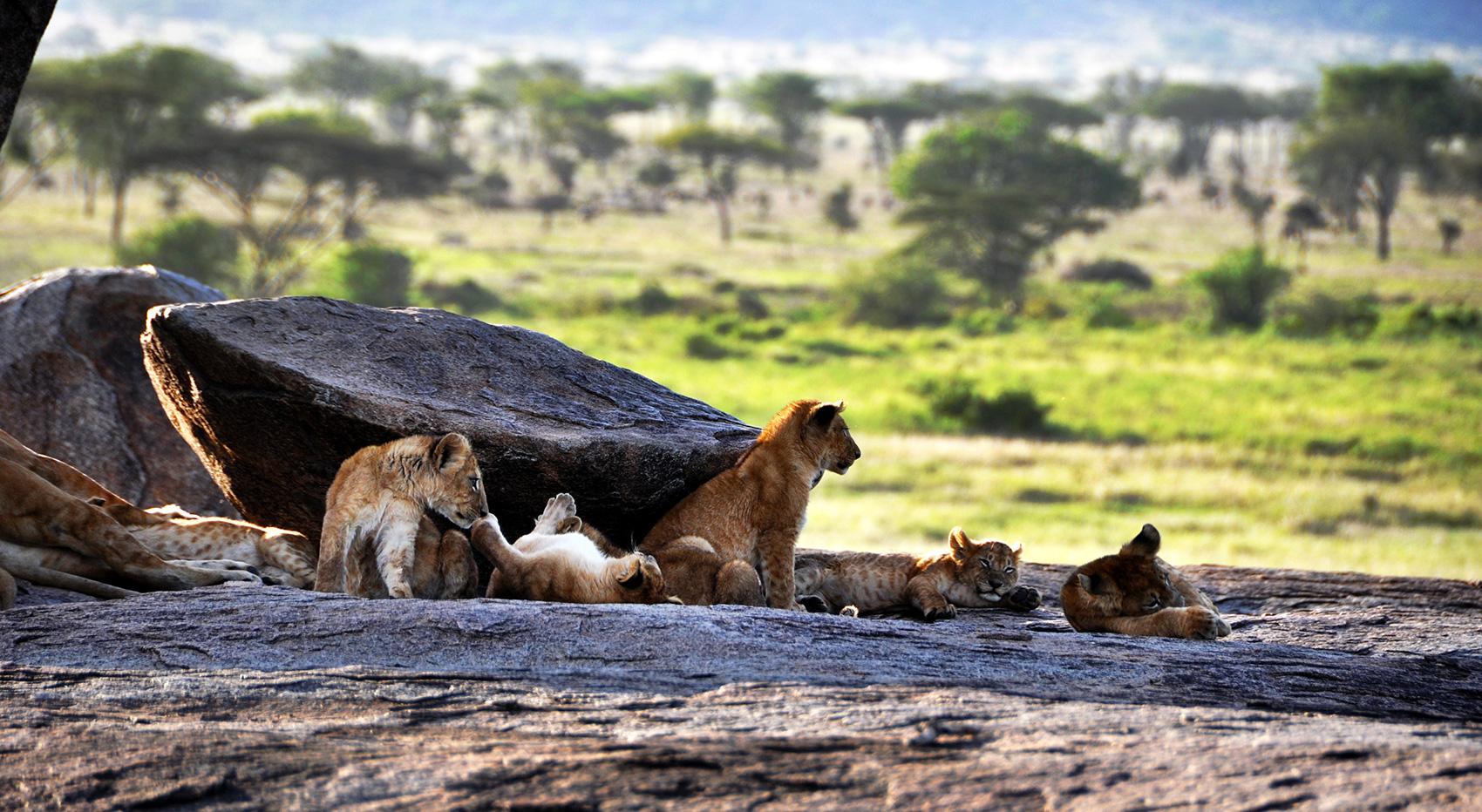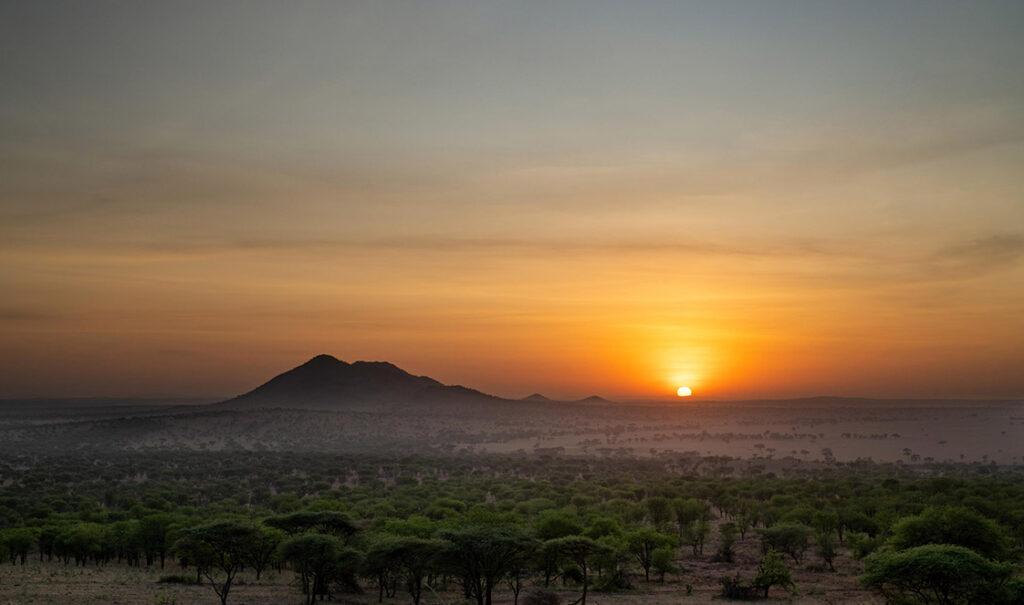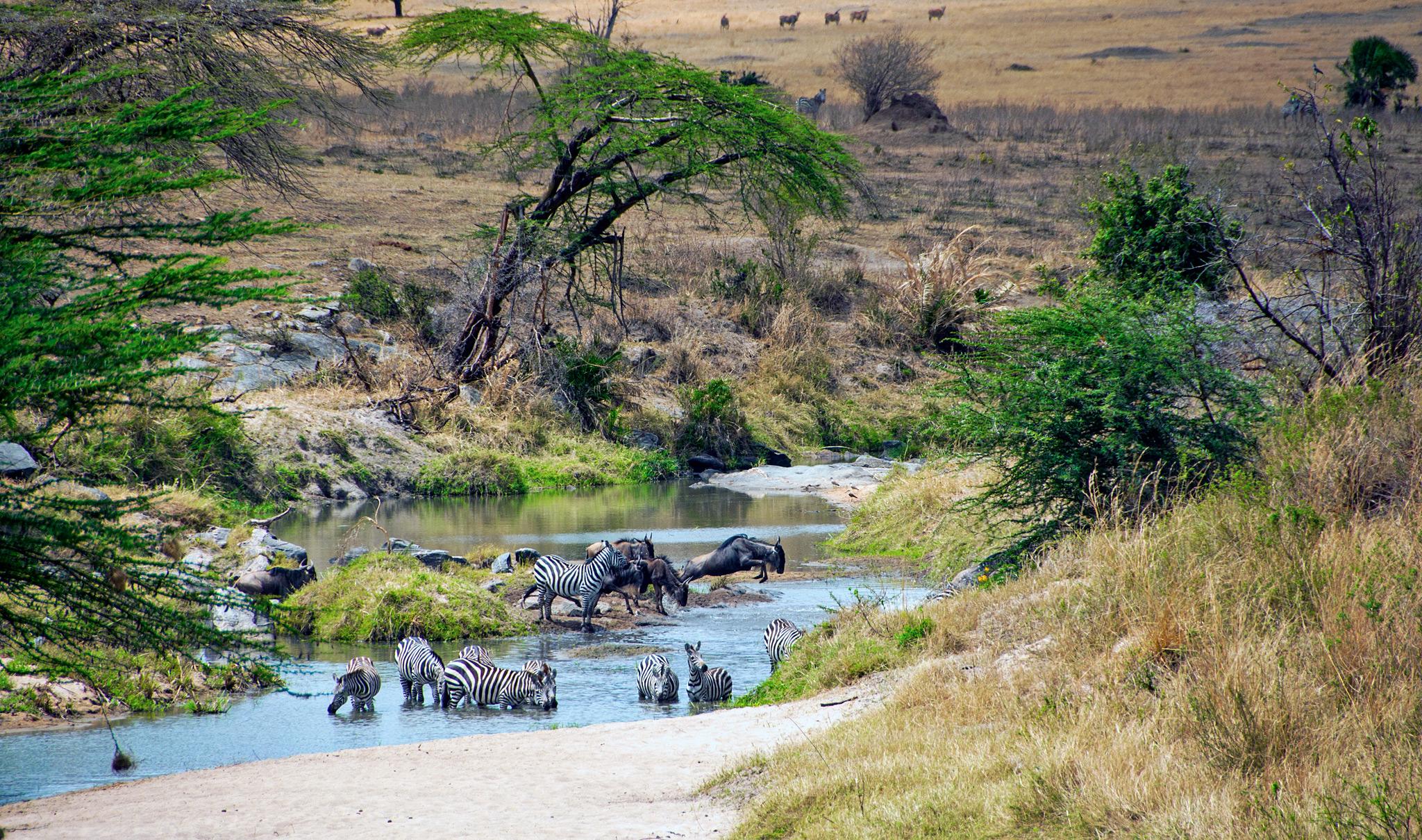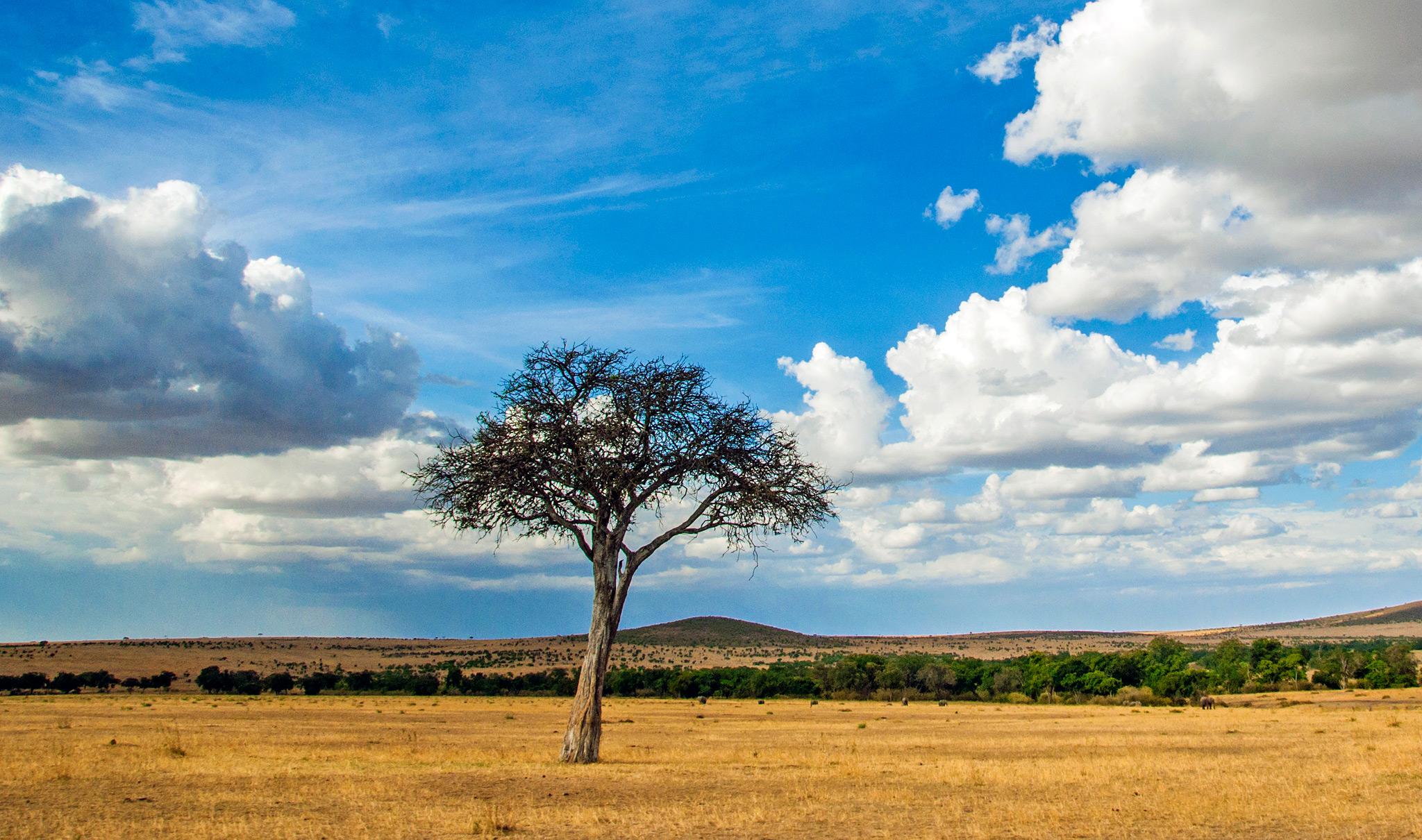Are you considering a safari to Tanzania in March but are worried about the rainy season? Don’t let that deter you! The first few weeks of March may be the most underrated time to visit Tanzania’s northern safari circuit.
Southern Tanzania experiences a more extended rainy season than the north. The rains start in December and continue until the end of March, coinciding with the low season and lower prices. Some accommodation may be closed during March. Therefore, there are better times for a southern safari. Ruaha and Nyerere are two of the most popular national parks in southern Tanzania.
On the other hand, the weather in northern Tanzania during the beginning of March is similar to January and February, which are dry and warm. This weather often continues until the third week of March. The long rains begin to take effect at the end of March. Serengeti, Ngorongoro Crater as well as Tarangire are located in northern Tanzania.
March is also one of the quietest times of the year. So why not take advantage of lower prices, fewer visitors and experience the beauty of these destinations for yourself?

What is the weather like in Tanzania in March?
Tanzania’s proximity to the equator results in a tropical climate with pleasant year-round temperatures. Instead of experiencing winter and summer, Tanzania experiences two rainy and two dry seasons.
March is one of the hottest and most humid months in Tanzania. It is considered the start of the three-month-long rains in Tanzania, but due to regional differences in climate, that is only partially accurate.
- Southern parks receive higher rainfall than northern parks during March. In the south, it is the final month of the rainy season that starts in December. Heavy rain, in the form of passing thunderstorms, can be expected daily.
- Northern parks can experience heavy afternoon thunderstorms. Still, the first two to three weeks of March tend to be dry and warm in northern Tanzania – mirroring the weather in the short dry season from January to February. Persistent heavy rain starts at the end of the month and continues into May.
- High-altitude parks, such as Ngorongoro Crater and Kilimanjaro National Park, receive high rainfall from mid-March. Temperatures are lower at altitude, and nighttime temperatures fall rapidly.

Average temperatures in Tanzania in March
Tanzania is known for its tropical climate, and March is no exception. With temperatures ranging from 28°C (82°F) inland to 33°C (91°F) at the coast, it can feel hot and humid this month.
If you plan to visit high-altitude areas, you’ll be pleased to know that the temperatures are much cooler. During the day, the temperature can reach a high of 26°C (78°F), while temperatures will be ten degrees lower at night. This means it is important to bring appropriate clothing for varying temperatures. Our packing tips below will help you prepare for a safari in Tanzania in March.
Is March a good time to go on safari in Tanzania?
Your Tanzania experience will vary depending on whether you visit the northern or southern safari circuit. One thing is guaranteed: you will share the parks with fewer other people because March is one of the quietest months of the year.
The Southern Safari Circuit
A safari through the southern parks of Tanzania includes Mikumi, Ruaha, and Nyerere National Parks. This stunning and less-visited area of Tanzania has been described as one of Africa’s last remaining wildernesses. These parks are vast and home to a high density of predators and prey, making them a perfect destination for wildlife enthusiasts.
If you’re planning your first safari and want to see a lot of wildlife, visiting the southern parks in March is not advisable. This is because the wildlife disperses into the wilderness away from their dry season water source, and the dense vegetation makes wildlife spotting more challenging. However, if you don’t mind the rain and are interested in experiencing beautiful landscapes at lower prices, a safari to the south is highly recommended during this time of year.

The Northern Safari Circuit
The first few weeks of March on the Northern Circuit tend to be dry, especially in low-lying areas of Tanzania. Therefore, if you are considering a safari in March, we recommend choosing parks at lower altitudes, such as Mkomazi, Tarangire and Serengeti National Parks.
Wildlife spotting is not as good as other times of the year. However, thanks to the density of wildlife, particularly at parks like Tarangire and Serengeti National Parks, you’ll see a broad range of wildlife. With fewer visitors, you’ll experience a sense of tranquillity in the parks, which are beautiful at this time of year.
Bear in mind that the beginning of the month usually is dry. However, passing afternoon thunderstorms can frequent the grassland plains. Moreover, with the impact of climate change, the weather can vary from the norm, and unpredictable weather can occur in March.
If you are seeking a secluded experience at a lower price and don’t mind the risk of rain, a safari in northern Tanzania in March could be for you.
Two of our favourite safaris in Tanzania in March:

Best of Tanzania
Places Tarangire National Park, Serengeti National Park, Karatu, Ngorongoro Crater
from 2,840 USD per person sharing

Tanzania in Style
Places Tarangire National Park, Karatu, Ngorongoro Crater, Serengeti National Park
from 3,860 USD (based on 7 persons)
Locational highlights to see and do during March:
- 2.5 million breeding Lesser Flamingos can be seen at Lake Natron. Every year, millions of flamingos come here from September to May to breed.
- The wildebeest calving seasonends in the southern Serengeti National Park, but there is still a chance of seeing the tail-end of this wildlife spectacle.
- There is a short window at the beginning of the month to trek Mount Kilimanjaro or the lesser visited Mount Meru before heavy rain arrives towards the end of the month.
- Those with scuba diving ambitions should know ocean visibility is generally low in March, whilst humidity levels and temperatures are high.
- During a spice tour on the Zanzibar archipelago, you may see cardamon harvested in March.
- Some parts of the national parks may be inaccessible in March. Still, during a balloon safari, you can float over the savannahs to enjoy the experience of a lifetime and go where 4×4 vehicles cannot.

The cost of visiting Tanzania in March
The cost of a safari can be influenced by regional differences in weather.
Southern Parks
March is the low season in southern Tanzania, as it marks the end of the rainy season. This means that prices are lower, and you may even be able to book at the last minute. However, some accommodation may be closed, and the wildlife numbers are less concentrated than during the dry season. But, on the bright side, the parks will be green after experiencing four months of rain. Moreover, visitor numbers are low, making it an ideal time for those who want to disconnect from the world and immerse themselves in nature at a lower price.
Northern Parks
The situation in the northern parks is more complex and will vary depending on the accommodation you choose. High-season prices continue until the second week of March, after which they decrease. Prices fall again in the last week of March as the low season begins due to the heavy rainfall that takes its toll in Northern Tanzania.
What to wear in Tanzania in March?
Here are our packing tips to prepare for a safari during March:
- Pack a lightweight rain jacket and a small umbrella.
- Choose lightweight clothing that’s easy to move around in.
- Bring clothes with long sleeves and trousers to protect you from the sun and insects.
- Avoid wearing camouflage or bright colours, including dark blue and black.
- Bring warm clothes for early morning or nighttime game drives.
- Pack sun protection like hats and sunglasses.
- Bring closed shoes for game drives and sitting around the campfire.
- Bring a costume if your lodge has a pool.
- Pack something smart for a safari dinner.
- If visiting Zanzibar, cover your shoulders and knees in public places.
Whether you would like to visit Tanzania in March, or any other month of the year – as local tour operator, we organise, book, and run your safari and mountain climbs. Get in touch today and let’s start planning your trip!
 on Tripadvisor
on Tripadvisor




